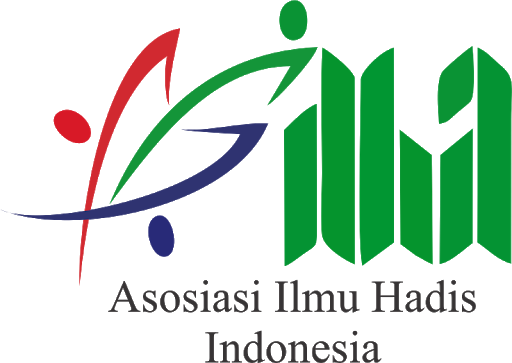The Analysis of Hadith Prohibition of Building Above Graves Perspective of the Community of Kampung Mahmud Bandung Selatan
Analisis Hadis Larangan Mendirikan Bangunan di atas Kuburan Perspektif Masyarakat Kampung Mahmud Bandung Selatan
DOI:
https://doi.org/10.14421/livinghadis.2023.4440Keywords:
Prohibition; Buildings over Graves; Mahmud Village; Perspective; Begger and LuckmanAbstract
The Prophet forbade his ummah not to build buildings over graves because they did not want to be like the previous people, namely the ummah of Noah as who worshiped their ancestors and the ignorant Arab people who worshiped idols. However, this prohibition is realized by society today with various perspectives. This paper aims to find out the perspective of the Kampung Mahmud Community towards the hadith prohibiting building over graves through two basic questions; first, how is the concept of graves and the prohibition of building over graves in Islam?, and second, how is the understanding of the people of Kampung Mahmud in understanding the prohibition of building over graves?.. The method used is a qualitative-descriptive method by collecting all observational data, interviews and documentation were then analyzed using the sociology of knowledge approach developed by Begger and Luckmann, namely social construction theory which includes three aspects, externalization, objectivation and internalization. The results of this study indicate that the Mahmud village community allows building over graves with several conditions that have been mutually agreed upon, namely that it must be built on private land and the center of the grave must be empty. They also forbid the construction of buildings over graves if they are used for worship.
 Abstract viewed: 424 times
|
Abstract viewed: 424 times
|
 pdf downloaded = 600 times
pdf downloaded = 600 times
References
Abū ʻAbdillāh Muḥammad ibn Yazīd ibn Mājah al- Rabʻī al-Qazwīnī. 1954. “Sunan Ibbnu Majah.” P. 498 in Kitab Abwab al-Janaiz bab Maa Jaa’a fii hatswi at-turaabi fii al-qabr.
Abu Isa Muhammad bin Isa bin Saurah bin Musa bin Ad-Dahhak As-Sulami At-Tirmidzi. 1999. “Sunan At-Tirmizi.” P. 188 in Jilid 3 Kitab Al-Janaiz Bab maa jaa’a fii karaahiyati al-mashyi ‘ala al-kubur, wa al-julusi ‘alaihaa, wa al-salati ilaiha. Riyadh, Saudi Arabia.
Abul Husain Muslim bin al-Hajjaj al-Qusyairi an-Naisaburi. 1998. “Shahih Muslim.” P. 482 in Kitab al-Kusuf, bab al-Nahyu ‘an tajsis al-qabr wa al-bina ’ alaihi.
Aḥmad ibn Syu`aib ibn `Alī ibn Sīnān Abū `Abd ar-Raḥmān al-Nasā’ī. 1999. “Sunan An-Nasai.” P. 228 in Kitab al-Janaiz bab al-Binaa ’ala al-Kubr. Riyadh, Saudi Arabia.
Al-Nawawi, Yahya bin Syaraf bin Hasan bin Husain. 1971. “Syarh Shahih Muslim.” P. 32 in Jilid 7 kitab al-janaiz bab 32. Beirut.
Ani. 2022. Wawancara. Bandung.
Baedke, Jan, and Tatjana Buklijas. 2022. “Where Organisms Meet the Environment: Introduction to the Special Issue ‘What Counts as Environment in Biology and Medicine: Historical, Philosophical and Sociological Perspectives.’” Studies in History and Philosophy of Science (xxxx):1–6. doi: 10.1016/j.shpsa.2022.09.008.
Basalamah, Khalid. 2020. 2 Alasan Mengapa Makam Rasulullah Saw Sampai Masuk Kompleks Masjid Nabawi.
Beger, Peter Ludwig, and Thomas Luckmann. 2013. Tafsir Sosial Atas Kenyataan. Jakarta: LP3ES.
Budiyono, Sigit. 2015. “Bangunan Makam Menurut Hukum Islam Dan Perda DKI Jakarta Nomor 3 Tahun 2007 Tentang Pemakaman.” 22–28.
Dharma, Feri Adi. 2018. “Kontruksi Realita Sosial: Pemikiran Peter L. Beger Tentang Kenyataan Sosial.” Jurnal Ilmu Komunikasi7 7(1):5–6.
Donbesuur, Francis et al. 2023. “On the Performance of Platform-Based International New Ventures: The Roles of Non-Market Strategies and Managerial Competencies.” Journal of International Management 29(2):101002. doi: 10.1016/j.intman.2022.101002.
Ence. 2022. Wawancara. Bandung.
Farneubun, Bonaventura. 2022. “Praktik Kremasi Dalam Gereja Katolik.” Seri Mitra Refleksi Ilmiah-Pastoral 1(1):1–18.
Hammy, Khairul. 2011. “Reinterpretasi Hadits: Upaya Kontekstualisasi Makna Hadis Melalui Pendekatan Ilmu-Ilmu Sosial Modern.” Al-Irfani 1(1):1–22.
Huda, Muhammad Khoirul. 2022. “Hukum Membangun Kuburan Menurut Mazhab Empat, Hadis Dan Logika Ushul Fiqhnya.” Harakah.Id, January 20, 1.
Kementrian Agama RI. 2014. Al-Qur’an Terjemah & Tajwid. 1st ed. edited by tim sygma media Inovasi. Bandung: PT. Sygma Examedia Arkanleema.
Manuaba, I. B. 2008. “Memahami Teori Kontruksi Sosial, Masyarakat, Kebudayaan Dan Politik.” 21(3):221.
Muh Muhajir, and Alimuddin. 2020. “Pandangan Islam Tentang Makam (Studi Kasus Bangunan Makam Di Kecamatan Somba Opu Kabupaten Gowa).” Shautuna Jurnal Ilmiah Mahasiswa Perbandingan Mazhab 1(2):1–18.
Muhammad, Abdullah. 2015. Ringkasan Kitab Al-Umm. 12th ed. Jakarta: Pusaka Azzam.
Mustafa Al-Khan. 1992. Al-Fiqh Al-Manhaji Ala Al-Mazhab Asy-Syafi’i. Damaskus: Darul Qolam.
Mustawi, Muhammad Hasan. 2022. Wawancara. Bandung.
Nabilah, Mahfidzatun. 2022. “Tradisi Menjaga Kuburan Seorang Yang Baru Meninggal Di Masyarakat Desa Wringin Kecamatan Wringin Kabupaten Bondowoso (Studi Living Hadits).” Al-Dhikra 4(1):1–23.
Niam, Achman Mukafi. 2022. “Berziarah Ke Ma’la, Tempat Keluarga Nabi Dan KH Maimoen Zubair Dimakamkan.” NU Online, August 3.
Nofitasari, Sri Arta Utami, and Suwandi Supatra. 2022. “Pemakaman Vertikal Sebagai Tipologi Baru.” Jurnal Sains, Teknologi, Urban, Perancangan, Arsitektur (Stupa) 4(1):1–14. doi: 10.24912/stupa.v4i1.16895.
Pratiwi, Sindi Fitria. 2019. “Pemahaman Masyarakat Tentang Jual Beli Pupuk Kandang: Studi Kasus Di Kampung Agung Timur Kecamatan Kalirejo Kabupaten Lampung Tengah.” IAIN Metro 14.
Rababa, Mohammad, and Shatha Al-Sabbah. 2023. “The Use of Islamic Spiritual Care Practices among Critically Ill Adult Patients: A Systematic Review.” Heliyon 9(3):e13862. doi: 10.1016/j.heliyon.2023.e13862.
Risetafdi. 2017. Di Gunung Inilah Habil Dibunuh Oleh Qabil.
Rofiqoh, Nur. 2020. “Nilai-Nilai Pendidikan Islam Dalam Tradisi Membangun Kijing/Ngijing (Studi Deskriptif Di Dusun Siwal Desa Siwal Kecamatan Kaliwungu Kabupaten Semarang).”
Sodikin. 2022. Wawancara. Bandung.
Sucita, Dewa Nyoman. 2021. “Tradisi Penguburan Mayat Umat Hindu Di Desa Tigawasa.” Paper Knowledge . Toward a Media History of Documents 4(1):1–12.
Sulaiman bin al-Asy’aṡ bin Ishaq bin Basyir bin Syidad bin ’Amr al-Azdi As-Sijistani. 1997. “Sunan Abu Dawud.” P. 358 in Kitab Al-Janaiz Bab Fii al-Bina ’ala al-Kubr. Beirut.
Syam, Nur. 2005. Islam Pesisir. Yogyakarta: LkiS Pelangi Aksara.
Wahid Muhammad, Al-Faqih Abul. 1989. Bidayatul Mujtahid. 1st ed. Beirut: Dar Al-Jiil.
Xu, Bin, and Ming Cheng M. Lo. 2022. “Toward a Cultural Sociology of Disaster: Introduction.” Poetics 93(PA):101682. doi: 10.1016/j.poetic.2022.101682.
Yuniardi, Yugi. 2018. Pesan Moral Upacara Perkabungan Dalam Agama Khonghucu (Studi Kasus Di Makin Cimanggis Depok). 1st ed. Matakin Penerbitan.
Yunus, Mahmud. 1972. Kamus Aran Indonesia. Jakarta: Mahmud Yunus Wa Dzurriyyah.
Yuwono, Emmanuel Satyo. 2016. “Kejawaan Dan Kekristenan: Negosiasi Identitas Orang Kristen Jawa Dalam Persoalan Di Sekitar Tradisi Ziarah Kubur.” Humanika 16(1):93–113. doi: 10.21831/hum.v16i1.12139.
Downloads
Published
Issue
Section
License
Copyright (c) 2023 Asty Oktaviani, Hartati Hartati, Ahmad Faqih Hasyim

This work is licensed under a Creative Commons Attribution-ShareAlike 4.0 International License.
- Authors who publish with this journal agree to the following terms:
- Authors retain copyright and grant the journal right of first publication with the work simultaneously licensed under a Creative Commons Attribution License that allows others to share the work with an acknowledgement of the work's authorship and initial publication in this journal.
- Authors are able to enter into separate, additional contractual arrangements for the non-exclusive distribution of the journal's published version of the work (e.g., post it to an institutional repository or publish it in a book), with an acknowledgement of its initial publication in this journal.
- Authors are permitted and encouraged to post their work online (e.g., in institutional repositories or on their website) prior to and during the submission process, as it can lead to productive exchanges, as well as earlier and greater citation of published work.
















